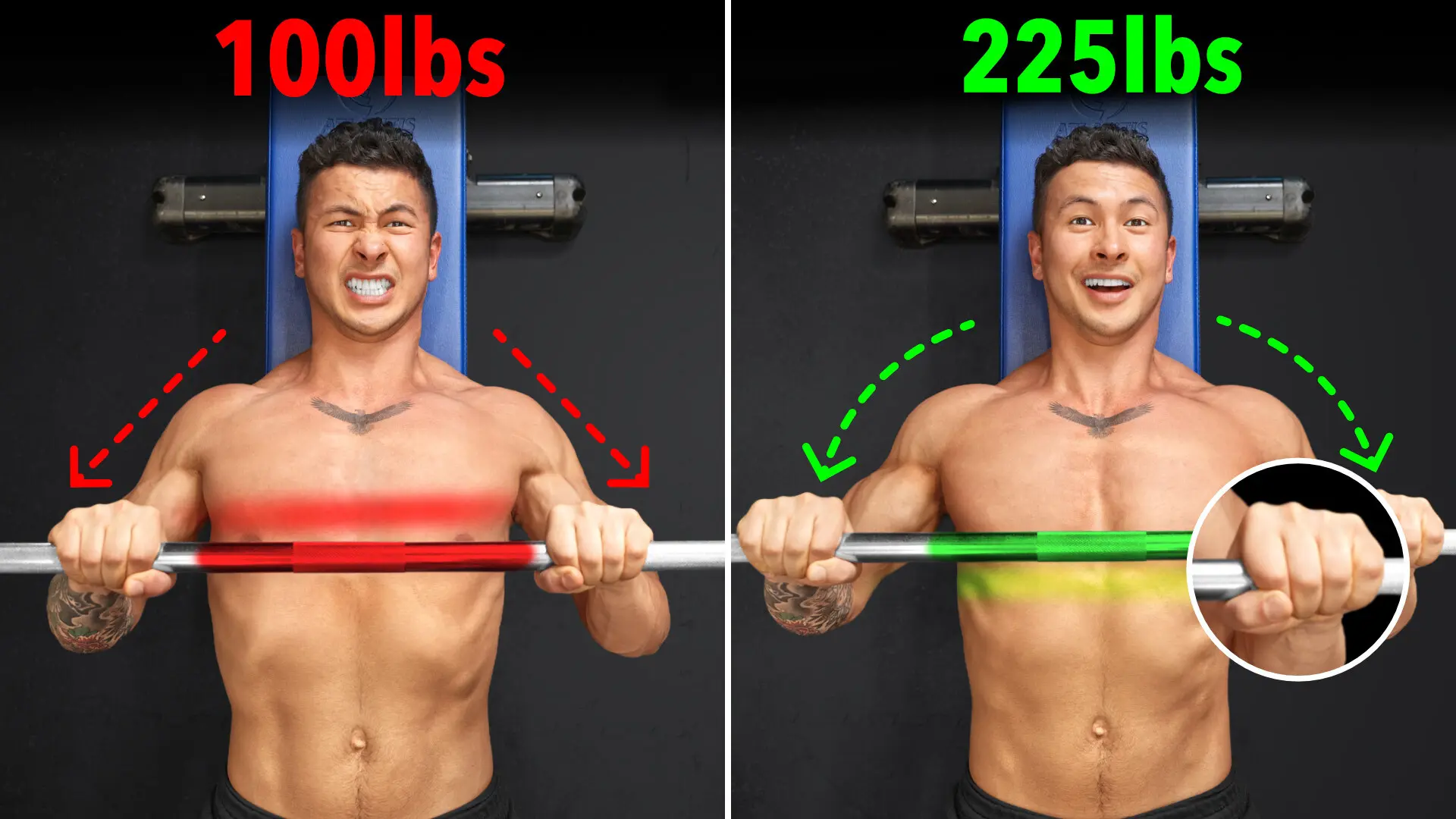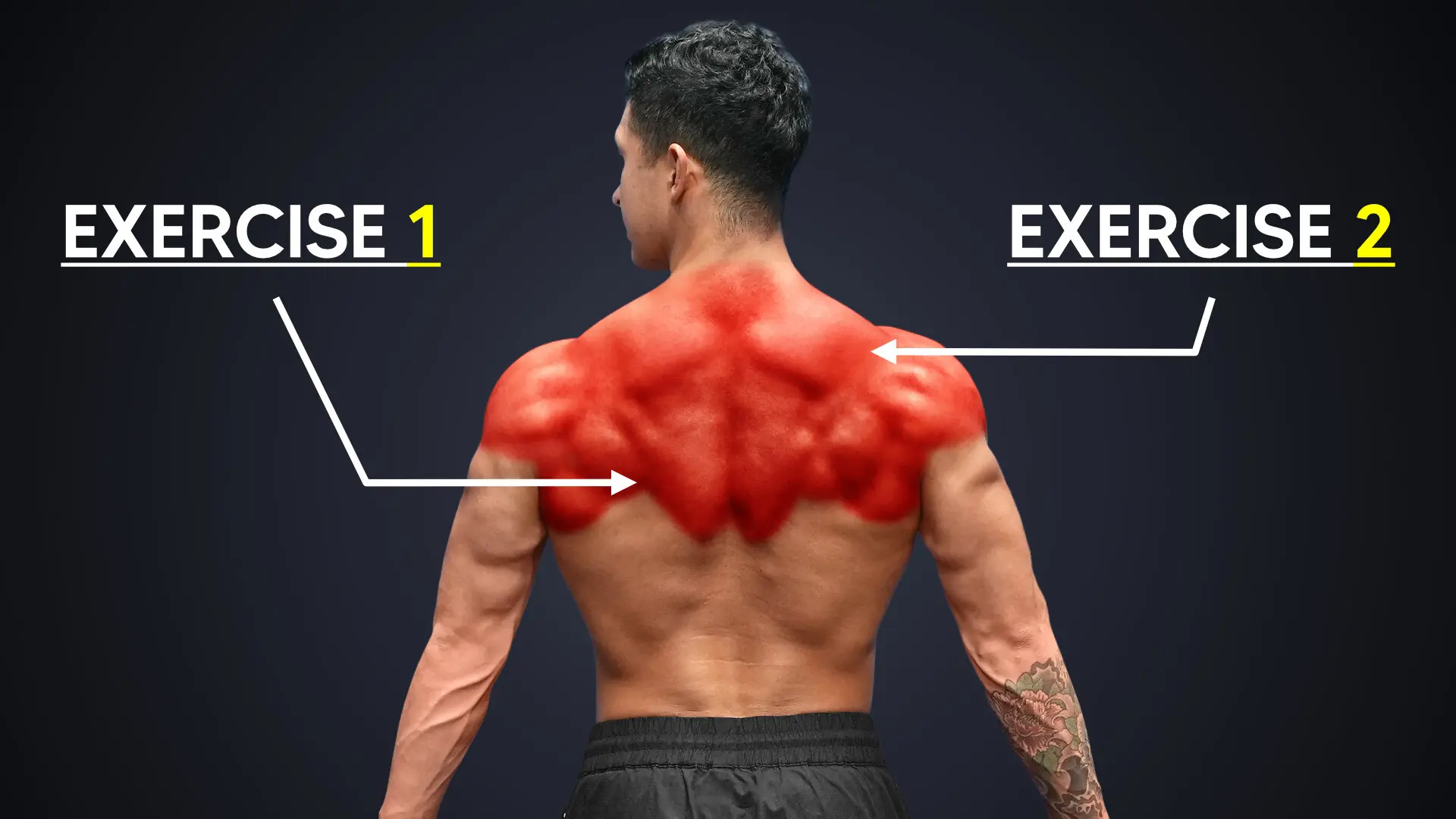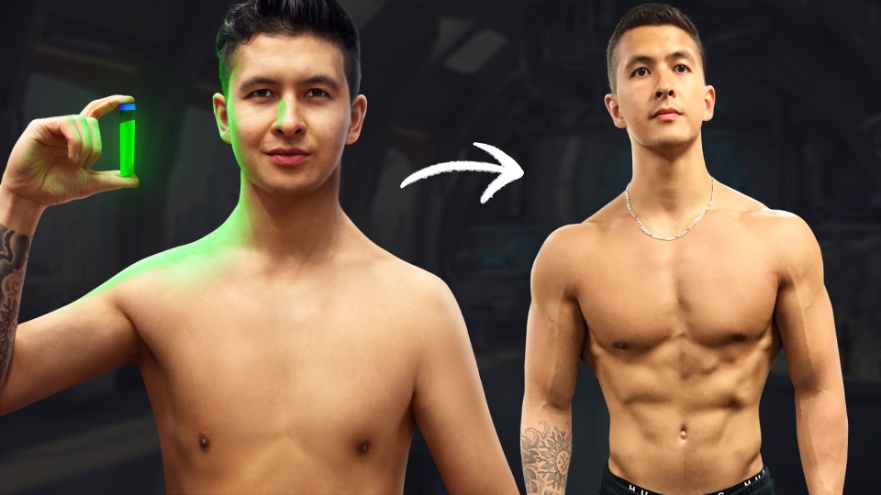
How To Build Muscle: Hypertrophy Explained By 7 Elite Scientists
Learn how to build muscle. The most effective, science-based way.
If you're interested in learning how to build muscle, you need to read this article.
Because I’m bringing you exclusive insights from 7 of the world’s smartest hypertrophy scientists. Using their research, I’ll create a step-by-step blueprint that will serve as your ultimate muscle-building hack.
How To Build Muscle Part 1: Training
Exercises (Dr. Mike Israetel)
So, when it comes to how to build muscle, the first piece of the puzzle is figuring out your exercises:
- How many exercises should you do?
- What are the best exercises for each muscle?
- How often should you change your exercises?
To help answer these important questions is Dr. Mike Israetel.

A brilliant professor with a PhD in Sports Physiology who clearly practices what he preaches.
How Many Exercises Should You Do?
Here's what Dr. Mike said.
When it comes to how to build muscle, you don't need 18 exercises per session.
if you overuse the number of exercises that you have, you end up going through all of your best stimulus to fatigue ratio exercises that you have realistic access to within a matter of a few months.
So we wanna conserve some variation.
I would say that the number of exercises per muscle per week you should have in your plan is something like 2 to 4.
What Exercises Should You Do?
Now as for what specific exercises to do for each muscle, here’s Dr. Mike’s recommendations.
How To Build Muscle In The Chest
Flat barbell or dumbbell pressing + some incline work + some kind of fly movement.
How To Build Muscle In The Back
Pull-ups, rows, and deadlifts with strict technique. Flexion rows, where you let your back completely curl over and then you arch and extend your chest up super high at the top, are also a good idea as they give that extra juicy thickness that you just can't buy at the store.
How To Build Muscle In The Biceps And Triceps
Because of the huge role stretch plays on hypertrophy, doing bicep curls from a stretched position of the biceps is a good idea. That'll include cable, baynesian curls, and behind-the-back incline dumbbell curls. For triceps, it'll be overhead movements as these really stretch, especially the long head. Another would be some kind of isolation extension work, like cable push downs. And the third would be some kind of compound pressing work.
How To Build Muscle In The Shoulders
Almost all rear dealt work is already done for you very well by proper back training. Almost all front dealt work is done more than sufficiently by pressing for your chest. So I would say after that, really you just need to focus maybe all or the majority of your effort on the side delts. And for those, I really like dumbbell lateral raises, seated or standing with very good control. Plus, of course, a variety of cable laterals are always really great.
How To Build Muscle In The Calves
I would say doing your calf raises with a straight leg stretches the gastroc venous muscle and thus also makes it grow much, much more impressively than doing them with a bent leg. But you have to have a big stretch. The biggest stretch you can have. Hold for two to four seconds and then come up. That's gonna be the key with calf training.
How To Build Muscle In The Quads
High bar barbell squats, Smith machine squats, leg presses, hack squats, belt squats, and properly done leg extensions — I would say that really kind of rounds out quad training.
How To Build Muscle In The Hamstrings
Some kind of hip hinges; I like stiff-legged deadlifts with a regular barbell. You can do them with dumbbells too. And then I would say, some combination of lying leg curls and seated leg curls. Seated leg curls are on average a little bit more effective because they do put the hamstringing into a bigger stretch position. But as is the case with variation, nothing is the best for forever. So, uh, at some point, you know, if you really love seated leg curls, you're gonna try lying leg curls and they're gonna blow you outta the water just because you're not used to them.
How To Build Muscle In The Glutes
Lunges have to be the core. Some kind of lunging, and it doesn't matter much what kind, but front foot elevated and weight focused on the front foot is a really good idea. Then I would say the next type of movement you want is some kind of hip thrust. Lastly, I'd say some kind of very deep sumo squatting is also really awesome for the glutes.
So here’s a master list of all the exercises Dr. Mike recommended.
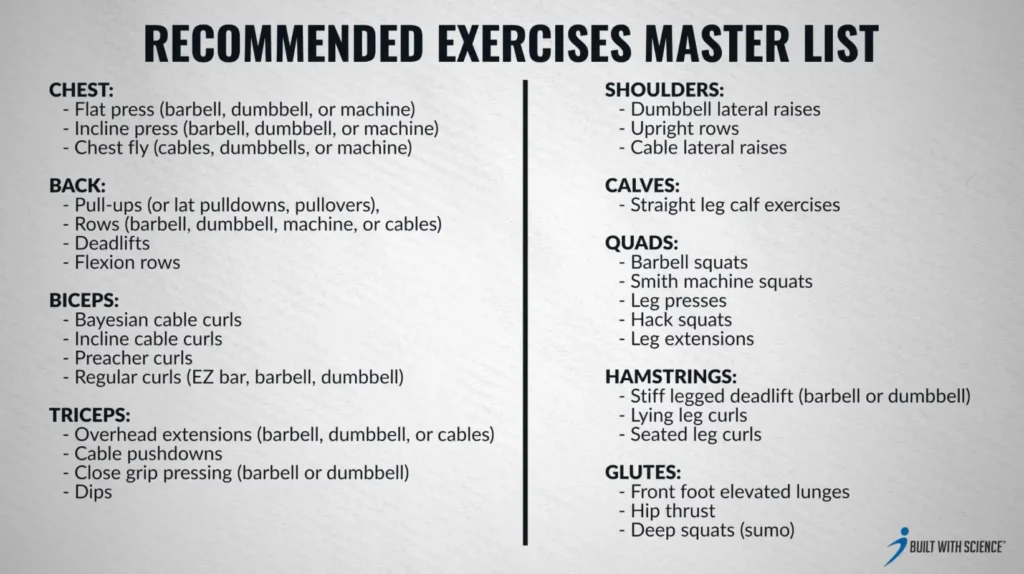
How Often Should You Switch Up Your Exercises?
Here's what Dr. Mike said.
It's been shown a few times in the research literature that if you change exercises every single week to a different one, you actually shortcut away some of your growth.
Any program that just changes exercises every week, eh, it's not gonna be the right answer.
You probably want kind of the same ones over and over and over.
As for how to know when it is a good time to switch your exercises, here’s what Dr. Mike recommends looking out for.
So let's paint a really easy picture.
If you're getting pumped, you're getting sore, you're getting annihilated and you're progressing in loading reps and your joints feel quite good and the exercise isn't boring you, there is no compelling reason to change that exercise.
But if your exercise hurting your joints, it's boring you et cetera, and there are other good candidates around, don't you dare keep doing exercises that you think or must do.
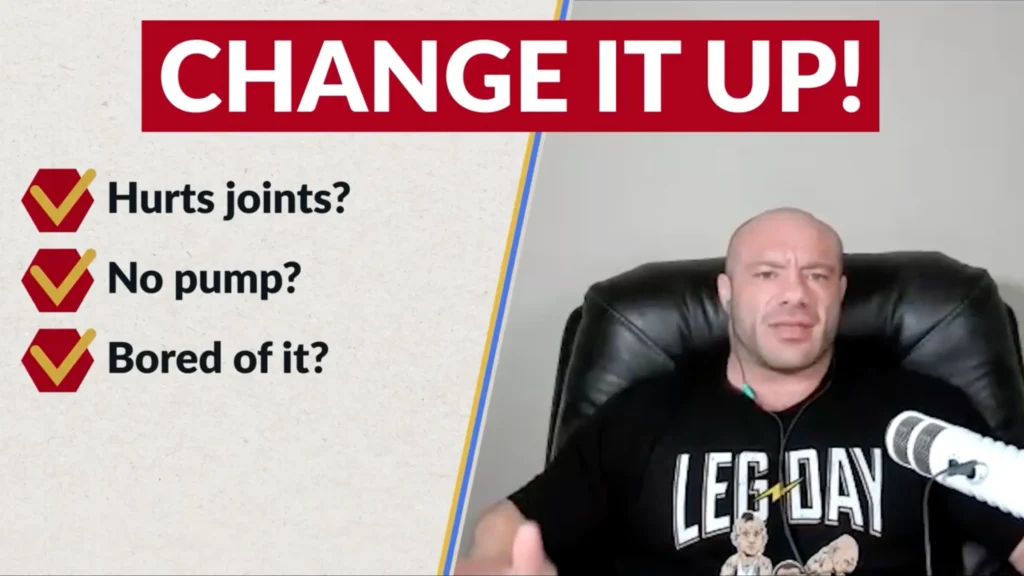
You go to your little list that we just made of all the best exercise and you go, which one do I want to use? Uh, I'll try that one.
You put 'em in, put 'em in, put 'em in, replace them, and then the whole thing keeps spinning.
Volume/frequency (Dr. Brad Schoenfeld)
So now you've got your exercises. The next piece of the how to build muscle puzzle is volume and frequency.
How many sets you do, how many days a week you workout, and the workout split you use are all crucial components of your training.
This is where our first expert, Dr. Brad Schoenfeld, comes in.

Brad runs a research lab dedicated to studying how to build muscle — optimally.
How Many Sets Should You Do To Maximize Hypertrophy?
Here's what he had to say about the number of sets needed to optimize hypertrophy.
What I think we can draw based on the research in combination with anecdotal evidence from the trenches is somewhere in the range of 10 to 20 sets per muscle group per week.
And those are very variable.
Some people can do well with lower volumes and some people who need to be on the higher end.
Brad then explained how people interested in learning how to build muscle in stubborn groups could strategically use higher volumes to force growth.
There may be a benefit to specialization cycles where high volumes can be beneficial for a given muscle group.
Let's say your chest might be somewhat needy.
Here's how to build muscle for that: you might, let's say, do 20 sets for your chest, but only do 5 sets for other muscle groups if they're more well-developed.
And that way, you can think on an individual level. And research is never gonna tell you that.
As for beginners who haven’t grown much overall muscle in the first place?
If you're a beginner, I think all of this goes out the window.
Like to me, you should not be focusing on volume for hypertrophy. The first several months should just be focused on learning your movement patterns and very basic type routines.
How Often Should We Train Each Muscle?
So, we know roughly how much volume we should be doing, but when it comes to how to build muscle, how often should we train each muscle to maximize hypertrophy?
When it comes to how to build muscle, contrary to what I had thought, data doesn't seem to show that training a muscle more than once a week has better growth effects. With the caveat that it's generally in studies that are fairly modest volumes — so somewhere 8 to 10 sets per muscle or less per week.
When you start getting over that amount, there does seem to be a modest hypertrophy benefit in training a muscle more than once a week.
So let's say you're gonna do 16 sets of your chest on Monday, because Monday's National Chest Day.
Instead of doing your 16 sets, you're be probably better off spreading it out, like:
- 8 sets on Monday, and
- 8 sets on Thursday or Friday
What Workout Split Does Brad Recommend?
Here’s Brad’s recommendation.
I think a very basic one, which is a good starting point, is a upper lower split.
Now, that again, can be customized, where you could do upper lower and then maybe you throw in a total body work at on one day if you wanna get more volume in.
And if you're doing fairly moderate volumes, there's really no reason why you can't do whatever splits you want that you think is more fun for you. For example, a bro split or dedicating 1 full training session just to your arms.
And here’s what Brad’s upper/lower split could look like using Dr. Mike's exercises.
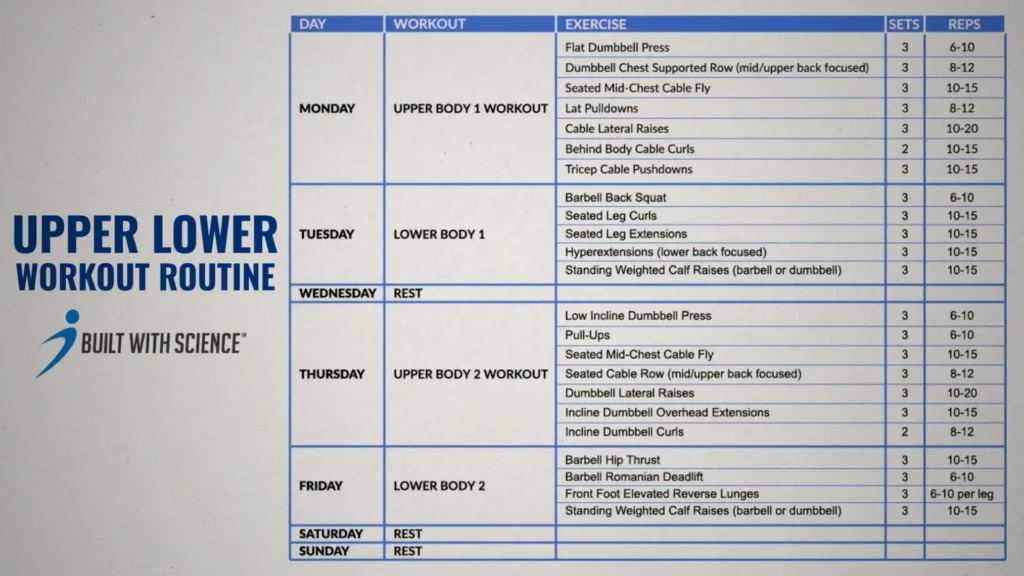
I’ll give you guys a link to download this routine at the end of the article. But first, we need to answer the next question in the how to build muscle puzzle.
Weight & Reps (Daniel Plotkin, PhD Student)
So you’ve got your routine, but when it comes to how to build muscle, how heavy should you lift and what rep range should you use?
This is where our next hypertrophy expert comes in, Daniel Plotkin.

Daniel was actually a former student of Brad Schoenfeld and a brilliant researcher for us over at Built With Science.
Rep Range And Load For Hypertrophy
Here’s what Daniel has to say.
So interestingly, a wide variety of rep ranges can get you similar amounts of hypertrophy.
But practically speaking, if you go too heavy then you'll likely need to do more sets and it might come with a little bit more joint wear and tear.
And on the other side of the spectrum, if you go too light, then it's harder to gauge proximity to failure and probably harder to take sets to or close to failure, particularly on compound movements.
So the sweet spot is likely gonna be for most exercises and most people is between 5 and 15 reps, which is usually a moderate load.
How To Build Muscle With Progressive Overload
However, if you’re following a proper diet you should be able to get stronger week after week.
And to keep your muscles growing, you need to continue challenging them with progressive overload. But what’s the most effective approach to do that? Adding a bit more weight compared to your last workout? Or on the other hand, trying to do more reps?
Luckily for us, Daniel was the lead author on a recent study that looked at just that.
So, we ran a study to try to see whether increasing reps or increasing in load was better for muscle growth.
We had one group only progressed in load while the other group only progressed in reps. And the reps group started at an average of about 10 reps per set and ended the study at about 15 to 20 reps per set, depending on the exercise.
And we found that there were pretty much no differences between groups in terms of how much hypertrophy they gained.
So to apply Daniel’s research, stick to a rep range of around 8-12 reps on most of your exercises.
Then, during each set, apply a technique called double progression.
This is where you focus on increasing your reps before adding more weight.
For example, if you can do 8 reps with a certain amount of weight, aim to do more reps with that same weight the following week.
Only when you can comfortably do 12 reps should you consider adding a small amount of weight, continuing the process.
Effort (Josh Pelland, MS)
So you now have a way of forcing your muscles to grow every workout. But another question in the how to build muscle puzzle arises: how hard should you workout? Should you train to failure?
Some people believe you should take your sets to all-out failure, the point where your muscles can no longer lift the weight.
Whereas others believe this style of training is just too much for your muscles to recover from.
Who’s right?
Does Training To Failure Lead To Better Hypertrophy? If So, How Much?
This is where our next expert comes in, Josh.

Josh and his colleague Zack from Data Driven Strength recently ran a massive analysis to determine if you actually experience more growth the closer to failure you train.
They found that on average, if you stop your sets about 5 reps short of failure, you’d achieve about 75% of max gains. From that point, for every rep you get closer to complete failure, you get about 5% more relative growth.
However, Josh cautioned that although training to failure may lead to more growth when you look at just 1 set in isolation, it also creates more fatigue.
So if you start training to failure during all your workouts and end up not being able to recover from it, it may not actually lead to more growth.
In Josh's words:
If you try to do full body 5x per week training all to failure, all with 20 plus sets per week, without deloading, you know that something has to give.
There's really no way of getting around that you have to train hard.
But then you can get into the weeds a little bit and ask, "Am I gonna do maybe more sets and training a little bit further from failure? Am I gonna do fewer sets and train all the way to failure, or am I gonna do both? Right? What can I recover from? What do I seem to benefit from? And where do I kind of get those indications that progress is moving in the right direction?"
How To Build Muscle With Training To Failure
So it’s clear the best approach likely varies depending on the person and how much they can recover from, but here’s what Josh recommends to start out with.
If you're a beginner, it's your first few weeks of training, it's a new exercise, probably what's gonna matter more is good safe technique.
But then, as you become more comfortable with that exercise, I think a reasonable starting place would be, train 2 to 3 reps in reserve for all your sets except for the last set, where you'd just take it all the way to failure.
And that can be a really good way to ensure that you're not way further from failure than than you thought, right?
Because you're failing that last set.
And if you get 10 more reps than the previous sets, okay, now you know that for the next time you do that exercise.
Also, maybe if you're doing, you know, back squat, you don't necessarily want to go all the way to failure, but make dang sure that you know, you're pushing your limits even if it is kind of a compound movement.
What About For Higher Volume Routines?
With that said, a caveat: Josh's analysis used an average volume of 10 direct sets per muscle per week, which as we know from Brad’s recommendation is on the low to moderate end of volume.
So it’s relatively unclear as to how exactly the benefit of training to failure changes for higher volume routines.
But Josh does have an exciting analysis in the work, which he shares below.
So I have a flash drive with me, which contains about 400 ultrasound scans I need to analyze at some point.
We compared basically a higher volume condition with three reps in reserve, and then the other arm of each individual. We looked at lower set volumes all the way to momentary failure.
I'm excited about these projects, not necessarily because they're gonna save the world independently, but we have this range of motion research, we have the frequency research, we have the volume research. How the hell to put it all together? Because it is tricky.
I’m honestly really excited to see the results from Josh, and rest assured I’ll keep you guys updated with the result.
How To Build Muscle "Hack" (Dr. Milo Wolf)
So far, our experts have provided us with an excellent foundation. What we've covered so far is going to drive the vast majority of your results. But for the icing on the cake, there is 1 new “hypertrophy hack” that’s been consistently shown to provide between 5 to 15% faster growth.
Here to explain this is the world’s most knowledgeable expert within this field of research, Dr. Milo Wolf.

We now have around 5 studies (1, 2, 3, 4, 5) looking at partial range of motion at lower muscle lengths or lengthened partials versus four range of motion.
The bottom half is what we call a lengthened partial because:
- You're training in the lengthened part of the range of motion, and
- You're doing a partial range of motion, about half the full rep
Across these 5 studies, 4 found more hypertrophy when using lengthened partials versus full range of motion and 1 has found no difference.
So overall, at this stage, it seems like it's very likely that lengthened partials will produce more hypertrophy than full range of motion, and at the very worst, it seems there's a chance that you're getting the same hypertrophy.
How To Build Muscle By Applying The Hypertrophy Hack To Your Training
Now as for the best way to start applying this "hypertrophy hack" to your training, here’s what Milo recommends.
Yeah, so I think the single best way to do it would be instead of doing a full range of motion on a given exercise, try using about 50% or about half reps in that lengthened position.
That's typically we've studied in the research.
There are other ways, like for example, doing a full range of motion set, but extending it by doing partial sat the end of the set when you can't get another full rep.
As for what exercises to apply this to, avoid using this on exercises where it’s unsafe to go to failure, such as barbell squats and bench press.
Your best options are instead lateral raises, bicep curls, tricep pushdowns, most back exercises, and chest flyes. And here’s what the lengthened partial would actually look like on these exercises.
Now as for how often you should be using this technique, here’s what Milo recommends.
The honest answer is we don't fully know.
The evidence simply hasn't looked at whole programs. Personally in my training, I use exclusively lengthened partials.
And I think if someone wanted to optimize their hypertrophy and came to me and was like, I just want the most muscle growth, I care about nothing else, I don't have any strength goals or anything, I would say use at least 50% of your training with length and partials.
So basically, take a look at your routine and see what exercises this technique could work well with.
Perform about 50% of those sets with either lengthened partials instead of full range of motion reps, or with lengthened partials done after your normal set.
Is The "Hypertrophy Hack" Reserved Only For Advanced Lifters?
Now as for whether this is a technique only advanced lifters should use, here’s what Milo had to say.
I think people who've never lifted weights before, to provide them with a frame of reference for what a partial should actually look like, teaching them a four range of motion first is good.
But I think after a few weeks of them knowing how to do a full range motion, that they're essentially good to go as far as like the partials go. And in fact, as much as scientists don't like to say it, most of these studies are done in relatively untrained populations.
So that is where it's most likely to have a big effect.
How To Build Muscle Part 2: Nutrition
Calorie Intake (Dr. Eric Helms)
So after speaking with these incredibly smart scientists on training, I then wanted to learn more about the other half of the how to build muscle equation, nutrition.
What exactly should your diet look like to maximize hypertrophy?
Typically what’s recommended is a calorie surplus, where you’re gaining weight and eating more calories than your body needs everyday.
But our next expert, pro bodybuilder and scientist Dr. Eric Helms, explained how that’s not always the best approach when it comes to how to build muscle.
When it comes to how to build muscle, you definitely don't have to be in a calorie surplus.
If you are someone who is starting relatively high in body fat, you're probably not going to want to be in a calorie surplus.
A beginner who's relatively high in body fat will probably be able to maximize hypertrophy at maintenance or even potentially in a small deficit, although there are some limits to that.
What's A Suitable Calorie Surplus For Hypertrophy?
So, when it comes to how to build muscle, a calorie surplus seems to make the most sense for those who are relatively lean. But just how large should that calorie surplus be?
So Rozenek and colleagues actually reported nearly exclusive lean mass gains on average in a group of untrained young male participants who started resistance training,
They just gave them a roughly 2000 calorie weight gainer on top of their habitual diet.
The participants gained roughly 3 kg or 7 lbs. of body mass in 8 weeks, which was entirely lean mass. So we're talking about basically gaining a pound a week of nearly entirely lean mass gains.
When you're young, and completely naive to resistance training and you first start, there is an argument for having a large surplus.
Unfortunately though, it seems like after that first maybe 1 or 2 big bulks that you have, you can't really go back to the well, because we've seen in multiple other studies on well-trained individuals that larger surpluses predominantly result in larger gains in fat mass.
And most recently, we found roughly the same thing in our recent study which was published at the end of 2023.
How Fast Should You Be Gaining Weight Every Month?
Now as for what this looks like in terms of how fast you should be gaining weight every month, here’s what Eric recommends.
Basically you want to scale your rate of weight gain to your experience level.
So if you're a rank novice, I think gaining 2% of your body weight per month, which would roughly track with that 300 to 500 calorie surplus is a good idea.
And then if you're an intermediate, probably something closer to 1% of your body weight per month is a decent target. That's probably gonna be between the 200 to 300 calorie surplus.
And then if you are advanced, we're probably talking a 100 to 200 calorie surplus at most and gaining like 0.5 to 1% of their body weight per month.
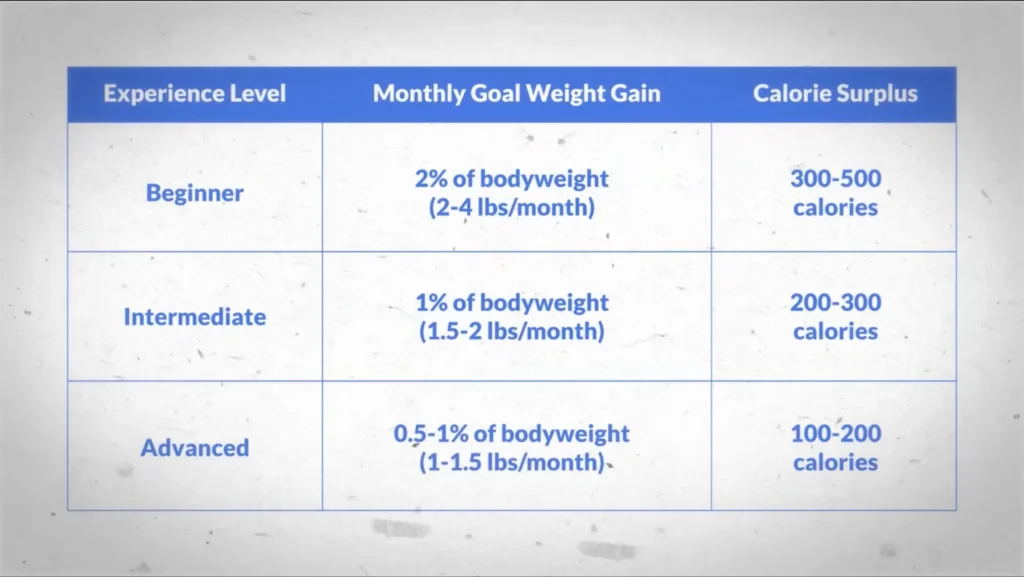
Now, to help you guys figure out exactly how many calories you need, I’ve implemented all of this research with Eric’s recommendations into a simple calculator you can use over here.
Protein Intake (Alan Aragon)
But what’s just as important to the how to build muscle picture as your calorie intake is your protein intake.
This is where our final expert comes in, Alan Aragon.
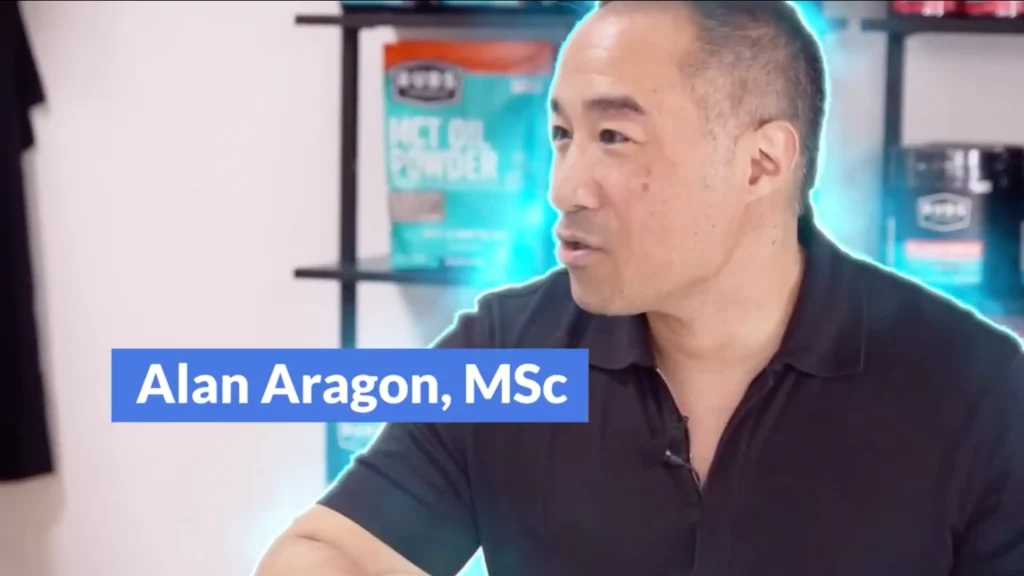
Alan is one of the world’s top nutrition researchers with over 30 years of success in the field. He’ll first explain how much protein we really need, and then he’ll provide a list of the best protein sources to maximize hypertrophy.
How Much Protein Should You Eat To Maximize Hypertrophy?
You have total daily protein intake, 1.6 to 2.2 grams per kilogram of body weight or 0.7 to 1.0 grams per pound.
If you can hit that by the end of the day, you've done 90, 95% of what you can possibly do to maximize your hypertrophy.
But we do have a study by Yasuda and colleagues who compared a low amount of protein at one of the meals, a moderate amount, and then a large amount of protein at the meals versus an even distribution of protein.
And so what they saw was the evenly distributed group had more muscle size and strength gains than the skewed distribution group.
And so, when it comes to how to build muscle optimally, of first importance, get total daily protein straight, that's the cake. Then, for the icing on the cake, spread it out relatively evenly over, I would say a minimum of 3 protein doses over the course of the day.
Best Protein Sources
Now as for the best protein sources to hit your daily target, here’s what he recommends.
Get a mix of protein sources in the diet through the day or through the week if you want to maximize hypertrophy.
So you've got your:
- Flesh foods. Beef, fish, poultry
- Dairy. Any and all milk products from Greek yogurt to milk itself to whey protein to whey casein blends.
- Eggs.
- Legume-based or bean-based proteins.
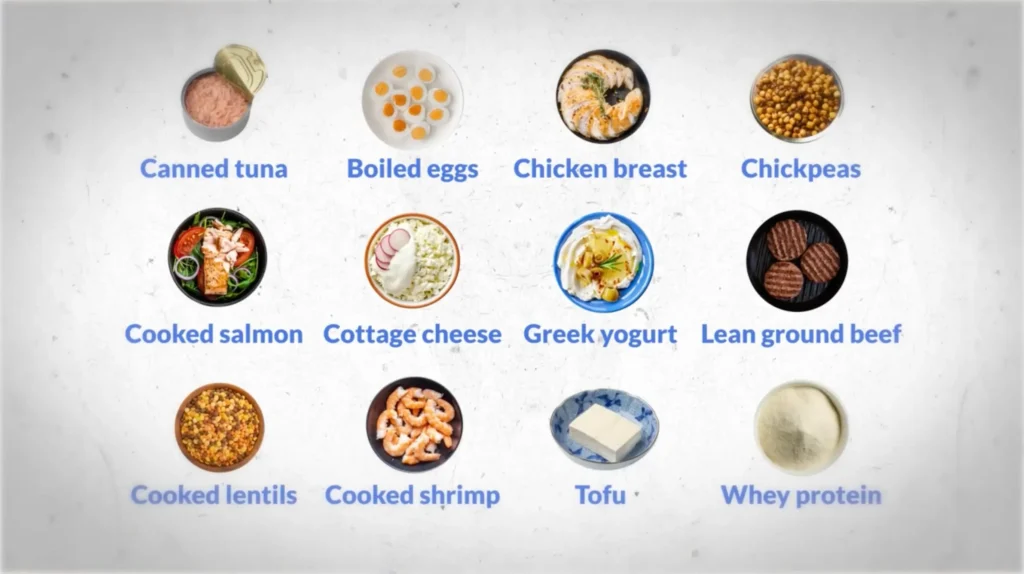
It's also worth mentioning that cholesterol, dietary cholesterol is a really potent precursor to testosterone production.
So, this was a semi-recent study that Bagheri and colleagues did where they tested 3 whole eggs post-exercise with the protein equivalent of roughly six egg whites post-exercise. And they ran the experiment, I believe it was for 12 weeks.
And they found that the whole eggs group had superior changes in body composition.
But the interesting part about this study is that the whole egg groups testosterone levels increased by 239 nanograms per deciliter.
And so that is a fricking huge increase in testosterone just from eating 3 whole eggs. Unfortunately, they didn't report the baseline testosterone levels, so we don't know whether that was like people going from lowish to kinda moderate or whether it was going from moderate to like, you know, Michael Hern level.
There is a good handful of literature showing 3 eggs a day essentially doesn't do anything concerning.
Which is great, because I love eggs.
They're one of the greatest protein sources in nature. Yeah. My blood lipids are fine and I enjoy the testosterone support.
How To Build Muscle: Takeaway
We covered a lot on how to build muscle, but here’s the main points to keep in mind.
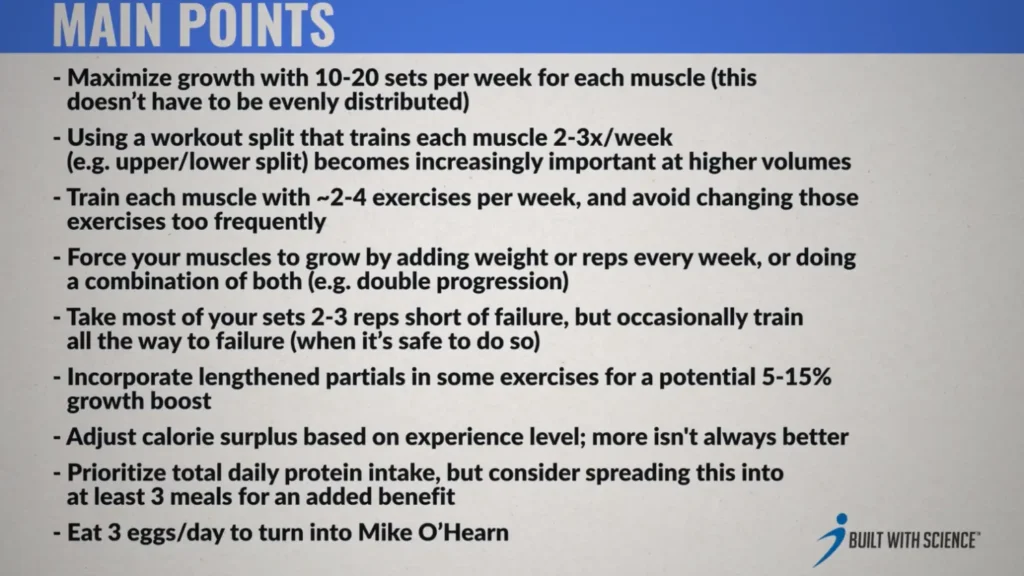
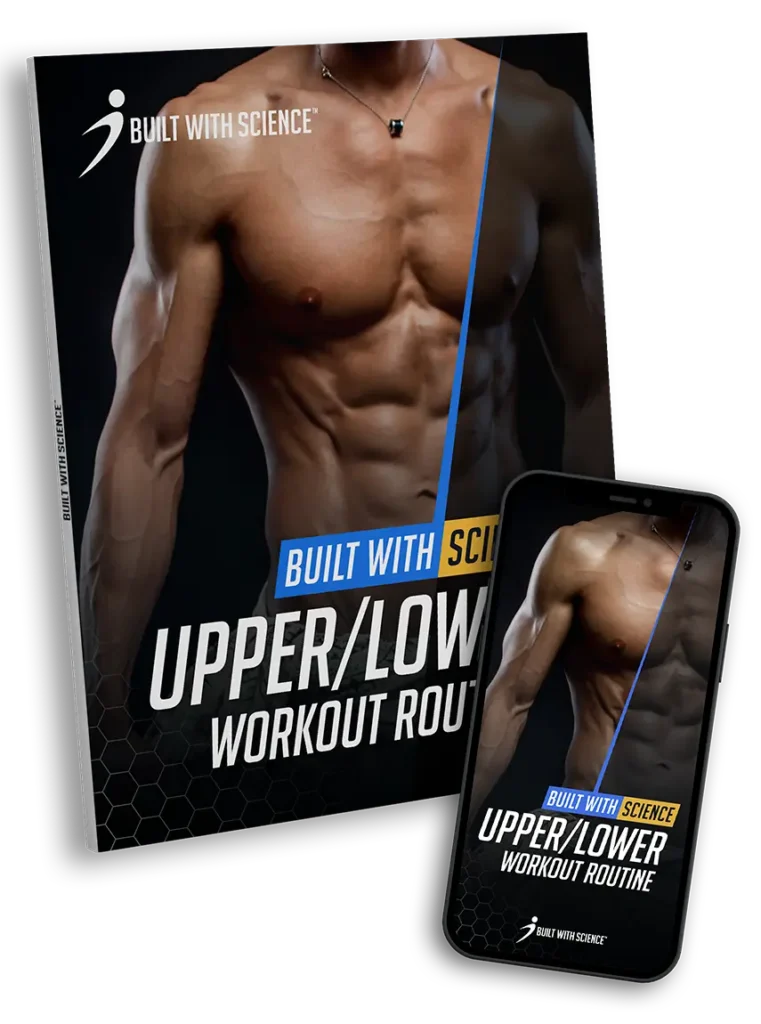
You can also download the full upper/lower workout routine we created earlier here:
Click the button below to download grab the full upper/lower workout routine:
↓
Just keep in mind that while all this research definitely points us in the right direction, there’s still a lot we don’t know about how to build muscle.
Especially with how these individual variables affect one another.
But I will do my best to keep you guys updated with any future research on how to build muscle. And on that note, a huge thank you to the 7 hypertrophy experts who helped with the article.
Many of these guys I’ve followed and looked up to for years, so having the opportunity to learn from them one on one and share their knowledge on how to build muscle with you guys on how to build muscle is an incredible honor and something my younger self would be so proud of.
Highly recommend giving them a follow and I’ll put links to all their social media down below.
- Dr. Mike Israetel: @drmikeisraetel
- Dr. Brad Schoenfeld: @bradschoenfeldphd
- Daniel Plotkin: @danielplotkin
- Josh Pelland: @josh.datadrivenstrength
- Dr. Milo Wolf: @wolfcoach_
- Dr. Eric Helms: @helms3dmj
- Alan Aragon: @thealanaragon
And if you’re looking for a step by step science-based plan to transform your body, you can take our quiz below to find the best program for you:
Click the button below to take my analysis quiz to discover the best program for you:
↓
Thanks so much for sticking to the end and I’ll see ya next time!


